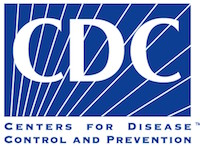
The war is the constant struggle between antibiotics and the bacteria they are designed to destroy.
For a long time, medicine had a significant upper-hand in this war. People would get sick, go to the doctor, get prescribed a regimen of antibiotics, and be back to their normal selves a week later. This pattern continued for decades.
Nature, however, always find a way of winning when challenged. And, after decades of being eradicated by antibiotics, nature had had enough. Bacteria began to evolve and become more and more resistant to antibiotics.
The latest warrior in the ring for Mother Nature is carbapenem-resistant Enterobacteriaceae, or CRE. CRE has been designated as a “superbug” because there are currently no known antibiotics that can effectively kill it. Making a bad situation even worse is the fact that CRE seems to have found its home in hospitals – buildings full of people with already compromised immune systems from illness, surgery, or trauma.
CRE and Hospital-acquired Infections
No one expects to go to the hospital and die from something completely unrelated from what originally sent them there. However, this happens more frequently than you would think. The CDC estimates that some 75,000 patients die every year from an infection contracted during a hospital stay.
In many cases, these deaths can be prevented. Proper hygiene, proper cleaning of medical instruments used during procedures, as well as enhanced screening and response can all be used to cut hospital-acquired infection rates.
This strategy of increased screening and heightened attention to hygiene has been deployed and showed great success in one group of hospitals in Chicago. Officials were so impressed that they are using the Chicago response and study procedures as a model for use in other facilities. The goal is not only a decrease in the number of hospital-acquired infections but also in the overall amount of antibiotics used to treat illness. Together, not only can they hopefully slow how quickly bacteria evolve to defeat antibiotic efforts but also reduce the number of hospital-acquired infections across the board, not just from CRE.
